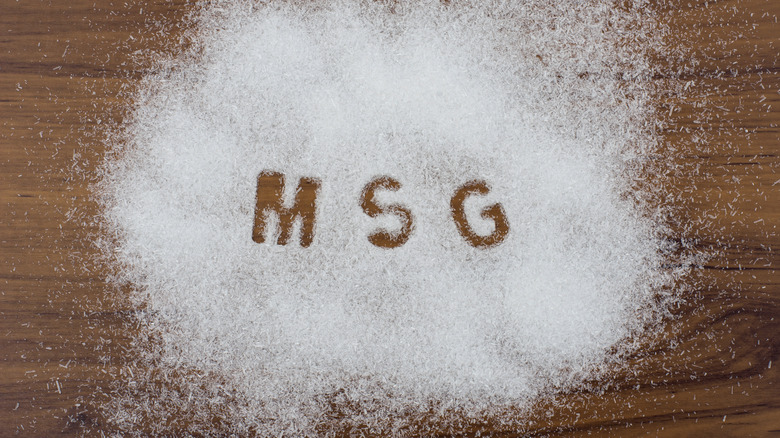MSG Is The Secret Ingredient You Need For Umami-Packed Tuna Salad
Ever made a tuna salad that doesn't quite hit the spot? Does it taste like something's missing even after you've adjusted the mayo and seasonings, added some textural crunch from crisp veggies, and incorporated a dash of piquant pickle juice? Then you need this tip in your life; MSG is the secret ingredient you've been searching for to make umami-packed tuna salad that's deeply savory and satisfying.
MSG is short for monosodium glutamate, a form of glutamate that's naturally found in foods like aged cheese, mushrooms, pepperoni, and canned tuna. Commonly stocked in supermarkets, MSG is the same color as table salt but has a flakier, crystalline texture. This flavor enhancer is a popular ingredient in Asian cookery but it's also found in processed foods, like soups, deli meats, chips, and seasoning blends, because it boosts savory, or umami, flavors.
Adding a sprinkling of MSG to your tuna salad does two things. Firstly, it brings forth the existing savory notes in the protein, making it taste even richer and meatier. It gives tuna flakes a rounder and deeper flavor, which melds together beautifully with the individual characteristics of mix-ins, such as bitter celery, mellow red onions, and sweet relish. Secondly, a dash of MSG cuts through the fatty quality of a cloying mayonnaise-based dressing, making it taste palatably lighter and giving your tuna salad a balanced mouthfeel. According to studies, this palatability is what lends MSG its capacity to enhance satiety and keep us fuller for longer.
How to add MSG to tuna salad
If you've never cooked with MSG before and its technical-sounding name is making you feel unsure about using it, there's no need to worry — use it in the same way as you'd sprinkle salt in your cooking. A simple sprinkle and a quick stir-through will lift your tuna salad and give it a savory edge, transforming it from reasonably good to super-scrumptious in seconds. Similar to other varieties of dry seasonings, MSG has a shelf life of up to three years, so you can store it beside your salt, pepper, and dry spices. Then you can go ahead and scatter a pinch over any lackluster savory dishes that would benefit from a helpful umami pick-me-up.
However, whenever you're using MSG be sure to watch the amount of salt you'd normally add to your recipe. You'll need to reduce the overall amount of salt so it works in harmony with the existing savory-lifting characteristic of the MSG, in much the same way as you'd use less salt in a stir fry when adding a dash of soy sauce. This tip is particularly useful if you're looking to reduce your sodium intake or are making a batch of tuna salad for toddlers and children to enjoy in their crustless sandwiches.

